History

The Church at Church Point
Remove not the ancient landmark which thy fathers have set.
Proverbs 22:28
Landmarks are defined as prominent or conspicuous objects on land that serve as guides to ships at sea, planes in the air, or travellers on a road. They may be buildings or distinguishing features of landscapes. Landmarks are also defined as significant or historical events and achievements. During February we will feature some Pittwater landmarks, commencing with a building that was once defined as a ‘landmark’.
Placed where Pittwater road merges with McCarr’s Creek road on the high side, and overlooking Pittwater, one of our earliest landmarks was a wooden chapel constructed to serve the people of Bayview and Church Point. Measuring 25 feet by 18 feet and built in 1872 a congregation moved from services under loquat trees to hymns within this structure. By 1881 the building was utilised as a school for 22 children and was called the Provisional School, changing in name to the Pittwater Public School in 1884.
The structure is reported to have given its name to the land as ‘Chapel Point’. The Aboriginal name is recorded as ‘Whurra Whurra’ although this is listed elsewhere as meaning ‘go away’ and ‘go home’ and may have been misinterpreted. In 1888 a school opened a short way along the road at Bay View Road and the church ceased to be used as a schoolroom.
An Historic Church. Church Point Memories.
(BY P.W.G)
With reference to “J E C’s” very interesting letter in a recent issue of the “Herald,” I would like to add a little further information, and, at the same time, to correct a small error that has been made to the effect that, “so far as appears, the church was then (1882) the only church building of any denomination on the seafront between Manly and Gosford. ” St John’s Church of England, Pittwater, on the headland near the 11-mile peg, was the first house of prayer in that district, having been opened on September 21, 1871, and was referred to as follows:
“This small church was situated quite in the wilderness, being the first erected in that part of the colony ”
The erection of the little Methodist Church was through the efforts of Mr. George McIntosh and Mr William Henry McKeown, who conducted services at Bayview, under a tree. This prompted Mr. William Oliver, an early settler of this district, to give one acre of land for 10/ to the following gentlemen, as joint tenants, as per the Certificate of Title, dated November 8, 1871: – George McIntosh, William Oliver, James Jones, Thomas Oliver, John Alderton, William Baker, all following the occupation of farmers, and residing at Pittwater, and William Henry McKeown, of Lane Cove, also a farmer.
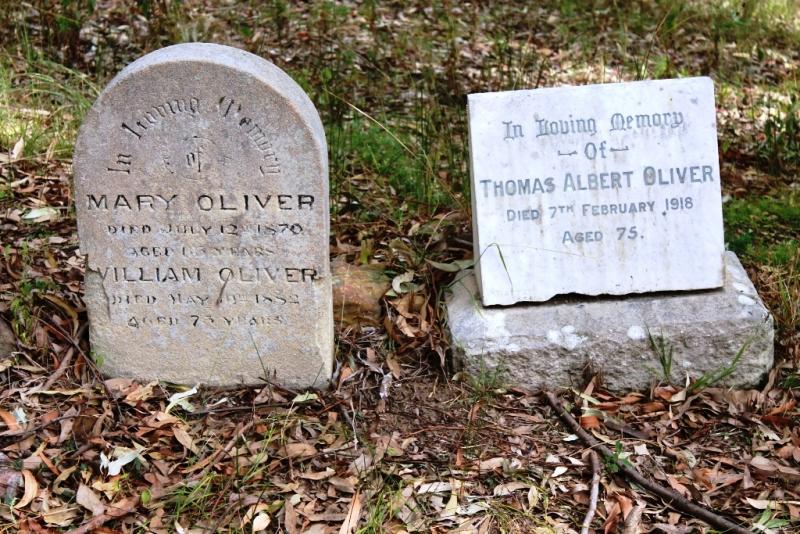
The little church was erected on this land in the year 1872 for the sum of £ 60, and the point derives its name from this little wooden house of worship (Church Point though in many early records is spoken of as Chapel Point). In the cemetery lie many pioneers who passed away about half a century ago, and such a place enkindles in one’s memory the lines of Gray’s “Elegy” –
“Each in his narrow cell for ever laid, The rude forefathers of the hamlet sleep ” The statement of “J EC” that the minister could only visit this church about once a quarter accounts for the burials in this God’s Acre being taken by the Rev R S Willis, M.A. Incumbent of St Matthew’s Church of England, Manly, up to 1890, and therefore the records of these burials are contained in the Church of England burial register at Manly. This church was used in the week days from May, 1884, until 1888 as a Public school, and known as the Pittwater Public School under the charge of Mr S Morrison, who now resides at Manly.
It was on July 19, 1887, that the late Sir Henry Parkes paid a visit to the school in this church building and signed the school’s visitors’ book. It is to be trusted that the demolition of this church will not be proceeded with, but that it will be restored, and again used for public worship, as the population is growing, and the nearest church is three miles away. This will save this historic place from going into oblivion. I have approached the church authorities with the hope that something may be done at the eleventh hour; even five members of my society (the Manly, Warringah and Pittwater Historical Society) having approached me to the effect that they are willing to spend a few Saturdays, if a conveyance can be provided to help to restore this building. I close with the following appropriate words of Scripture -“Remove not the ancient landmark which thy fathers have set.” AN HISTORIC CHURCH. (1930, April 5). The Sydney Morning Herald (NSW : 1842 – 1954), p. 9. Retrieved from http://nla.gov.au/nla.news-article16639396
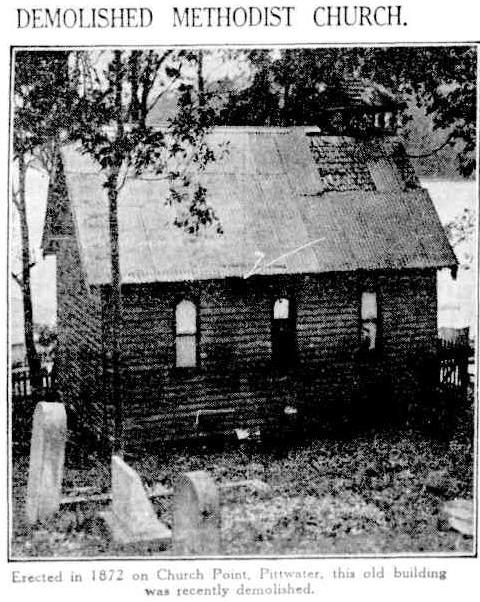
The same year, a probationer in his third year, the Rev. Edward J. Rodd was beginning his two years’ term at St. Leonard. His circuit extended to Pittwater, and that year the Church Point Church was erected at a cost of £60. The erection of the church was accomplished through the efforts of Messrs. Geo. McIntosh and Wm. Henry McKeown, who conducted services at Bayview under a tree. Mr. William Oliver gave the site. In many early records it is spoken of as Chapel Point Church. For several years it was used as a public school, and Sir Henry Parkes’ signature appears in the old visitor’s book.
Where is that book now? Diamond Jubilee. (1932, December 17). The Methodist(Sydney, NSW : 1892 – 1954), p. 16. Retrieved from http://nla.gov.au/nla.news-article155292368
AT CHURCH POINT
On the precipitous slopes of the hillside overlooking the quiet backwater of Pittwater, and shaded by the silver coated gums, stands the little wooden church that gave Church Point its name. It is a quaint little structure in which a service is held occasionally, and I should think that ten people would crowd It. It has a tower bell. It looked up at the church from the road that winds round the waterside, and ‘Johnnie’ Roche, the man they call the ‘Prince of Pittwater’ who was my companion, asked me If I had seen the church yard. We scrambled up past the church, and then, among the rank grass and ever-spreading scrub, found the stones that mark the dust of the ‘Rude forefathers of the hamlet.’ Beside one weatherworn stones ‘Johnnie’ paused, and spoke to himself rather than to me. ‘He was a relative of the teacher at the little school we got a holiday, I remember, to attend this funeral.’ In this quiet spot rest many that were friends of my companion in his boyhood. The muter gardeners Time and Mature are gradually repairing this small ‘God’s Acre,’ and the few graves are being gradually lost to human ken. Meanwhile the waters of the Bay lap the sand-fringed road, and motor parties Indicate that to-day is the day of the quick. The dead are of the past. Church Point. AT CHURCH POINT. (1922, November 23). Evening News(Sydney, NSW : 1869 – 1931), p. 8. Retrieved from http://nla.gov.au/nla.news-article118825051
Above right: DEMOLISHED METHODIST CHURCH. Erected in 1872 on Church Point, Pittwater, this old building was recently demolished. DEMOLISHED METHODIST CHURCH. (1932, April 7). The Sydney Morning Herald (NSW : 1842 – 1954), p. 12. Retrieved from http://nla.gov.au/nla.news-article16853823
On July 20th 1887 Sir Henry Parkes, while having an ‘alfresco luncheon in the bush’ at Pittwater visited this lovely old building, signing the visitors book.
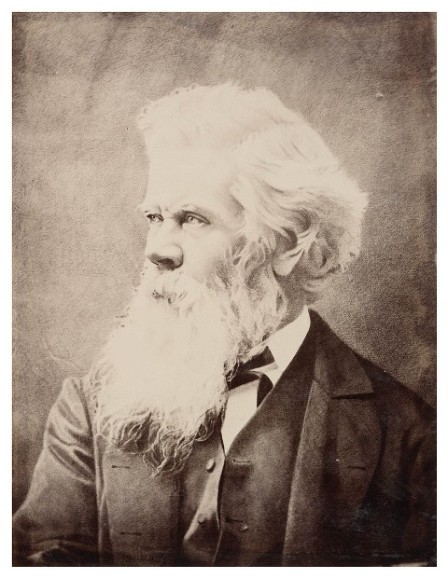 Sir Henry Parkes Lunches in the Bush at Pittwater
Sir Henry Parkes Lunches in the Bush at Pittwater
NEWS OF THE DAY. Sir HENRY PARKES visited North Shore yesterday for the purpose of inspecting the crossing at Middle Harbour; known as the Spit, where it is proposed to erect a bridge, giving access to Manly by the North Shore-road. The Premier went over to Milson’s Point at 8 o’clock in the morning, where Mr. Ives, M.L.A., the Mayor of Manly (Mr. Austin), and Mr. Charles Hayes were waiting in a carriage with four-in-hand. A start was at once made for the Spit, and the party were joined on the way by several other carriages, including another four-in-hand. The Spit was crossed by the punt, and after a drive round Manly, tho party, to the number of about 20, including the Mayors of St. Leonards and Victoria, breakfasted at the Grand Pier Hotel. A start was next made for Pittwater, some 15 or 16 miles distant, and after an alfresco luncheon in the bush, at which the toasts of the health of the Premier and of Mr. Ives were heartily drunk, the return journey was commenced. Sir Henry arrived in town about 6 o’clock in the evening. No decision has yet been arrived at regarding the construction of the bridge.
NEWS OF THE DAY. (1887, July 20). The Sydney Morning Herald (NSW : 1842 – 1954), p. 7. Retrieved from http://nla.gov.au/nla.news-article28350268
Right: Sir Henry Parkes, who was Premier of NSW when he visited Church Point. Image Courtesy of State Library of NSW, No. a1304033
The church held services every week until around 1908 when a new Methodist church opened at Mona Vale and people no longer travelled to the spot. Services continued although members of the MWPHS visiting in 1926 record that the building and cemetery were in disrepair and letters to SMH Editor suggested this be rectified if services were to recommence soon.
Plans to demolish the building ensued and the structure was torn down in April 1932 despite efforts to save it for its heritage value. The cemetery, fortunately, remains in place and protected by our own Pittwater Council and residents. (See Church Point Reserve Association Website Below).
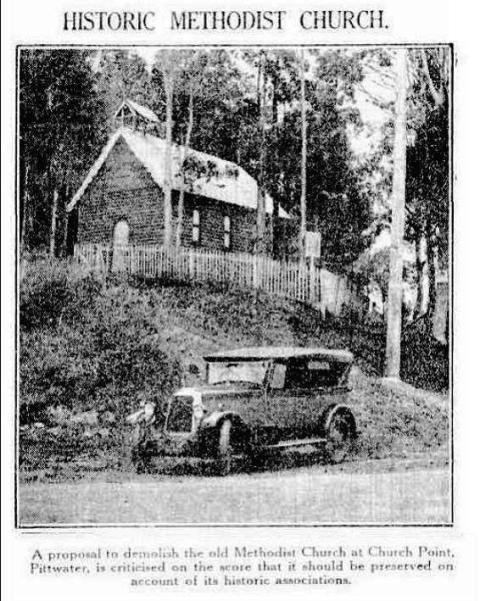
Right: HISTORIC METHODIST CHURCH. (1930, March 19). The Sydney Morning Herald(NSW : 1842 – 1954), p. 16. Retrieved from http://nla.gov.au/nla.news-article16634674
EARLY PITTWATER. HISTORICAL SOCIETY’S PILGRIMAGE.
Members of the Manly, Warringah, and Pittwater Historical Society on Saturday afternoon made a pilgrimage to historic spots In the Pittwater district. The party, numbering 34, proceeded to Church Point, and inspected the old Methodist Church and cemetery. Mr. P. W. Gledhill, honorary secretary of the society, delivered n lecture on the early history of Pittwater. He said that the church was opened In 1873, and that the land for the cemetery was given by Mr. William Oliver. Mr. John Wheeler road a paper on Scotland Island and McCarr’s Creek.
EARLY PITTWATER. (1926, November 22). The Sydney Morning Herald (NSW : 1842 – 1954), p. 10. Retrieved from http://nla.gov.au/nla.news-article16333867
EARLY PITTWATER. TO THE EDITOR OF THE HERALD.
Sir,-With reference to the account in the “Herald” of last Saturday of the pilgrimage of the Manly, Warringah, and Pittwater Historical Society to historic spots in the Pittwater district, I may state I was a member of the party, and noticed the dilapidated condition of the old church at Church Point The cemetery is badly neglected, and requires fencing and other repairs, while the building itself needs painting. As I understand services are to be resumed shortly, it would appear advisable that the Methodist Church authorities should mike an effort to restore the building and land to Its one time orderly condition so that the old church may again become an attractive place of worship for residents and visitors In the Pittwater district. I am etc.,
Stanmore, Nov. 25. J. S. N. WHEELER
EARLY PITTWATER. (1926, November 26). The Sydney Morning Herald (NSW : 1842 – 1954), p. 12. Retrieved from http://nla.gov.au/nla.news-article16321192
OLD CHURCH DEMOLISHED.
The demolition of the old Methodist Church at Church Point, Pittwater, which was criticised on the score that the building should be preserved on account of its historical associations has been completed during the last few days The residents of the district were far from being unanimous concerning the wisdom of the decision especially in view of the fact that the nearest church is three miles away and those who opposed it were supported by the Manly Warirngah and Pittwater Historical Society. For several years the building was used on week days as a public school and In 1887 was visited by Sir Henry Parkes whose signature appears in the old visitors’ book.
OLD CHURCH DEMOLISHED. (1932, April 6). The Sydney Morning Herald (NSW : 1842 – 1954), p. 15. Retrieved from http://nla.gov.au/nla.news-article1685364
Below: Corner of Pittwater and Mc Carr’s Creek Roads, January 2012.
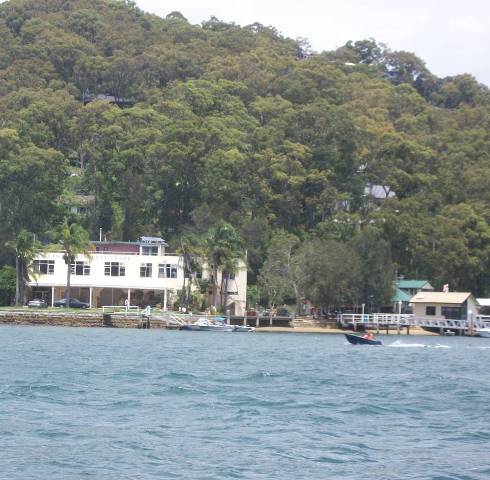
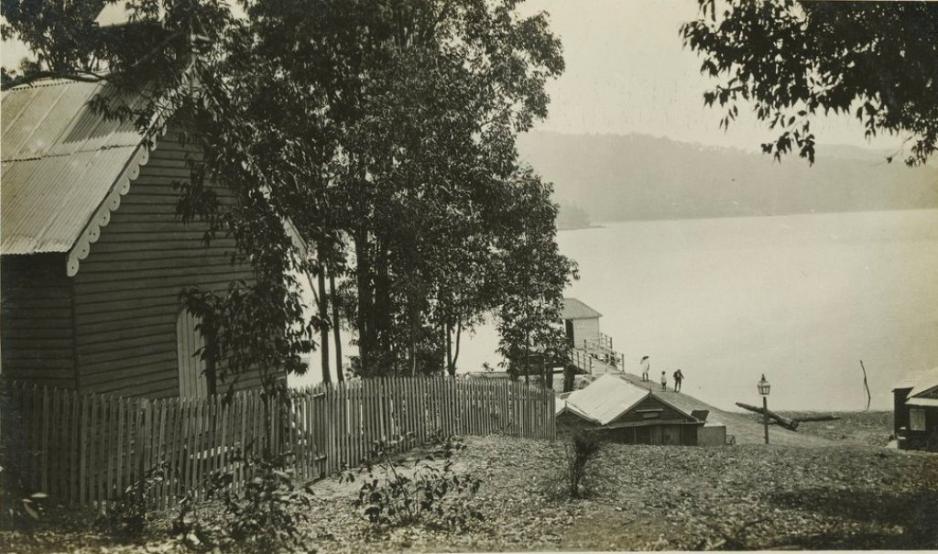
Above: ‘Church Point, Pitt Water – 20 minutes from Sydney’ by A. J. Vogan (Arthur James), 1859-1948, [ca. 1910 – ca. 1915]. Courtesy State Library of Victoria. Image H82.254/8/29
Church at Church Point threads Collected and Collated by A J Guesdon. Copyright Pittwater Online News, 2012. All Rights Reserved.
Do you have any historical information on Pittwater?
If you any information or images on the history of the Western Foreshores of Pittwater, we would love you to hear your story.
Share your story